May 7 to May 12
After unification activists beheaded the Yoichi Hatta statue in the spring of 2017, the Tainan City government acted quickly and unveiled its new head on May 7, a day before the 75th anniversary of his death. Hatta was on his way to Japanese-occupied Philippines during World War II to work on an irrigation project when an American torpedo sank his ship.
Yes, it can be argued that Hatta’s contributions to Taiwan, most notably designing the Chianan Irrigation Canal, were done in service of the Japanese colonizers who wanted to exploit Taiwan for its resources. But being able to achieve such a feat — it’s still the largest irrigation system in Taiwan — in just his early 30s is impressive, and the canal did greatly transform the livelihood of farmers living in the Chianan Plains (嘉南平原). The Wushantou Reservoir (烏山頭水庫), which was built in conjunction with the canal, was the largest in Asia at time of completion in 1930.
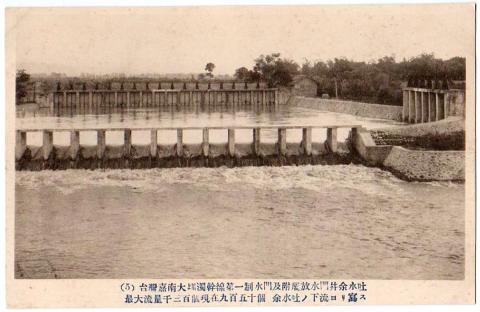
Photos courtesy of Wikimedia Commons
Hatta came to Taiwan in 1910 fresh out of college, and made the colony his home until his death. After the Japanese defeat, his wife Sotoyo committed suicide by jumping into the Wushantou Reservoir. The couple’s grave still lies nearby, guarded by the Hatta statue, which went through an intriguing journey of its own. Today, visitors can learn about the life of Hatta and his staff who lived near the reservoir during its construction at the Yoichi Hatta Memorial Park.
RICE COLONY
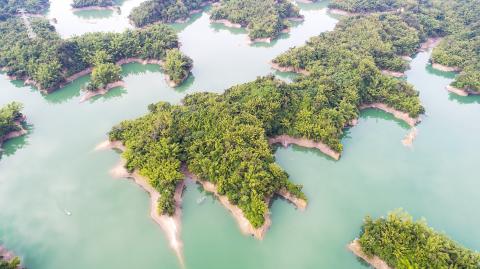
Photos courtesy of Wikimedia Commons
According to a biography by Chen Wen-tien (陳文添), Hatta was known for his progressive attitude during his studies, hoping to do something useful instead of just obtaining a good position. His classmates often told him that his talent would be stifled in conservative Japan, and he would be better off heading overseas. At that time, Japan had taken over Taiwan, Korea and the southern half of Sakhalin Island. Hatta chose Taiwan.
While local anti-Japanese resistance had largely subsided by 1910, scattered rebellions still took place over the years, including the Miaoli Incident of 1913 and the Tapani Incident of 1915, which marked the last armed revolt involving Han Chinese during the Japanese era.
The colonizers were able to run Taiwan without financial aid from Japan starting in 1905, and they sought to quickly develop the island’s economy. Taiwan was designated as an agriculture colony to help supply rice and sugar to Japan, which suffered from grain shortages after industrialization. The problem, the colonizers noticed, was that while Taiwan had the environment and climate for rice production, it was far from maximizing its potential due to sub-par irrigation.
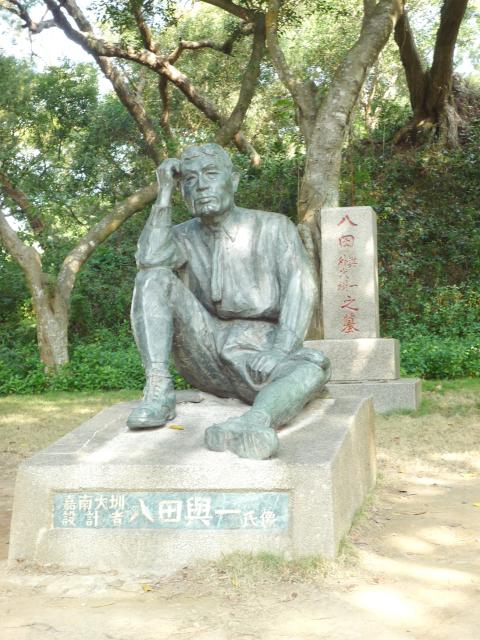
Photos courtesy of Wikimedia Commons
In 1910, there were about 20 independent canals running through the Chianan Plain. But before the Chianan irrigation canal was completed, about two-thirds of the plain did not have proper access to water, which was needed for rice production. Despite having the largest farmable area in Taiwan, its economy lagged far behind other districts, contributing to less than 20 percent of the colony’s total rice production in 1921.
Hatta first helped design the Taoyuan Irrigation Canal, which commenced construction in 1916. The authorities then turned to the Chianan plains. The landscape required a totally different project, with a dam upstream to store water and a way to conduct the water to the ocean. The plan was finally set in motion in 1920, especially after the 1918 rice riots in Japan, with the formation of a cooperative for the project. Hatta left his government post to head the project, eventually moving to the Wushantou area in 1922 after staff dormitories were built.
ARGUING WITH AMERICANS
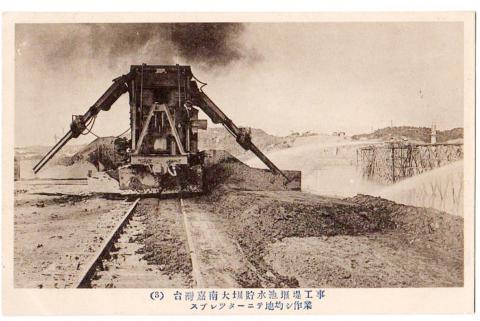
Photos courtesy of Wikimedia Commons
Of course, the construction process was arduous with many setbacks and casualties. The Great Kanto Earthquake of 1923 also took place during this time, and the project’s budget was slashed to make way for disaster relief funds, leading to more delays.
A notable episode took place in 1924, when the colonial government invited American engineer Joel D. Justin, who was the leading authority in semi-hydraulic fill dams, to inspect the progress. According to another biography by Chen Cheng-mei (陳正美), Hatta was not pleased, taking it as a sign that his superiors were still skeptical about the project. Chen writes that Justin wrote a highly critical report, and Hatta spent his New Year vacation researching and writing a rebuttal. The government went with Hatta’s version, and Justin said he would only accept the decision if the government sent him statistics each year to show that Hatta was right.
“If he is right, it will definitely greatly change how we design semi-hydraulic fill dams,” Justin said. “And Hatta’s name will be forever etched in civil engineering history.”
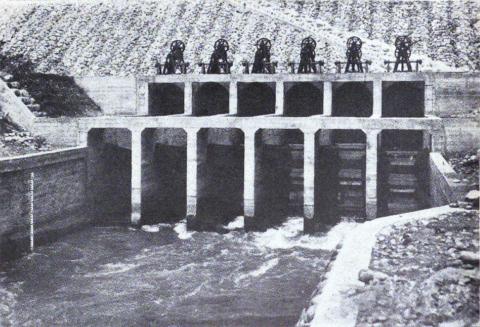
Photos courtesy of Wikimedia Commons
In 1930, the 10-year construction project finally wrapped up. Hatta was now a 44-year-old man with graying hair and eight children. With the project complete, Hatta was summoned back to Taipei, saying goodbye to his longtime staff and local residents.
THE STATUE SAGA
Three years after the dam’s completion, production in the Chianan plains increased threefold and the lives of residents greatly improved. Before he left, he and his staff built a memorial for the 134 souls who perished during construction. There was no distinction between Taiwanese and Japanese; the names are listed in order of death.
Afterward, his subordinates suggested building a statue of him to commemorate the great feat. Hatta reluctantly agreed, but remained adamant that he be depicted wearing regular work clothes in a casual pose instead of the usual upright stance. The statue was erected in 1931, showing Hatta sitting on an embankment deep in thought.
When World War II broke out, many statues around the colony were uprooted and melted as raw material for the battlefield. In 1944, the Hatta statue disappeared. After the war, irrigation officials found it in a storage room — but due to the anti-Japanese political climate under the Chinese Nationalist Party (KMT), the Chianan Irrigation Association staff continued to keep it hidden for decades.
The association attempted to restore the statue in 1976, but anti-Japanese sentiment was high again due to Japan breaking ties with Taiwan in 1972 and their request was denied. It was finally returned to its original place in 1981 until the beheading incident opened another chapter in its long saga.
Taiwan in Time, a column about Taiwan’s history that is published every Sunday, spotlights important or interesting events around the nation that have anniversaries this week.
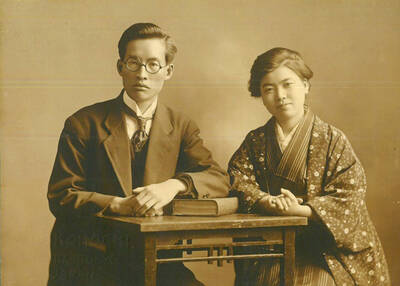
Aug. 25 to Aug. 31 Although Mr. Lin (林) had been married to his Japanese wife for a decade, their union was never legally recognized — and even their daughter was officially deemed illegitimate. During the first half of Japanese rule in Taiwan, only marriages between Japanese men and Taiwanese women were valid, unless the Taiwanese husband formally joined a Japanese household. In 1920, Lin took his frustrations directly to the Ministry of Home Affairs: “Since Japan took possession of Taiwan, we have obeyed the government’s directives and committed ourselves to breaking old Qing-era customs. Yet ... our marriages remain unrecognized,
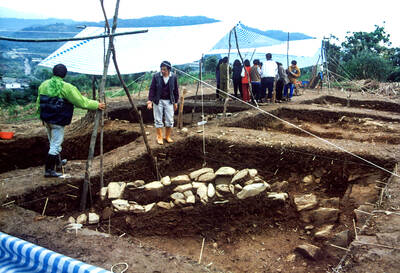
During the Metal Ages, prior to the arrival of the Dutch and Chinese, a great shift took place in indigenous material culture. Glass and agate beads, introduced after 400BC, completely replaced Taiwanese nephrite (jade) as the ornamental materials of choice, anthropologist Liu Jiun-Yu (劉俊昱) of the University of Washington wrote in a 2023 article. He added of the island’s modern indigenous peoples: “They are the descendants of prehistoric Formosans but have no nephrite-using cultures.” Moderns squint at that dynamic era of trade and cultural change through the mutually supporting lenses of later settler-colonialism and imperial power, which treated the indigenous as
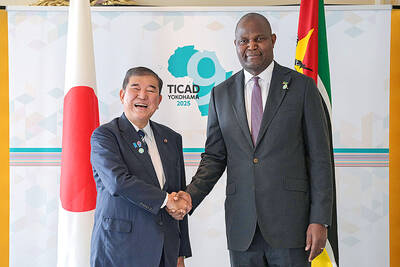
An attempt to promote friendship between Japan and countries in Africa has transformed into a xenophobic row about migration after inaccurate media reports suggested the scheme would lead to a “flood of immigrants.” The controversy erupted after the Japan International Cooperation Agency, or JICA, said this month it had designated four Japanese cities as “Africa hometowns” for partner countries in Africa: Mozambique, Nigeria, Ghana and Tanzania. The program, announced at the end of an international conference on African development in Yokohama, will involve personnel exchanges and events to foster closer ties between the four regional Japanese cities — Imabari, Kisarazu, Sanjo and
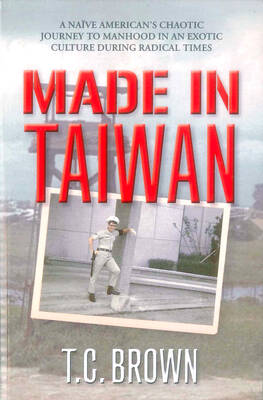
By 1971, heroin and opium use among US troops fighting in Vietnam had reached epidemic proportions, with 42 percent of American servicemen saying they’d tried opioids at least once and around 20 percent claiming some level of addiction, according to the US Department of Defense. Though heroin use by US troops has been little discussed in the context of Taiwan, these and other drugs — produced in part by rogue Chinese Nationalist Party (KMT) armies then in Thailand and Myanmar — also spread to US military bases on the island, where soldiers were often stoned or high. American military policeman